The Killing Fields -- A brutal history told in photographs
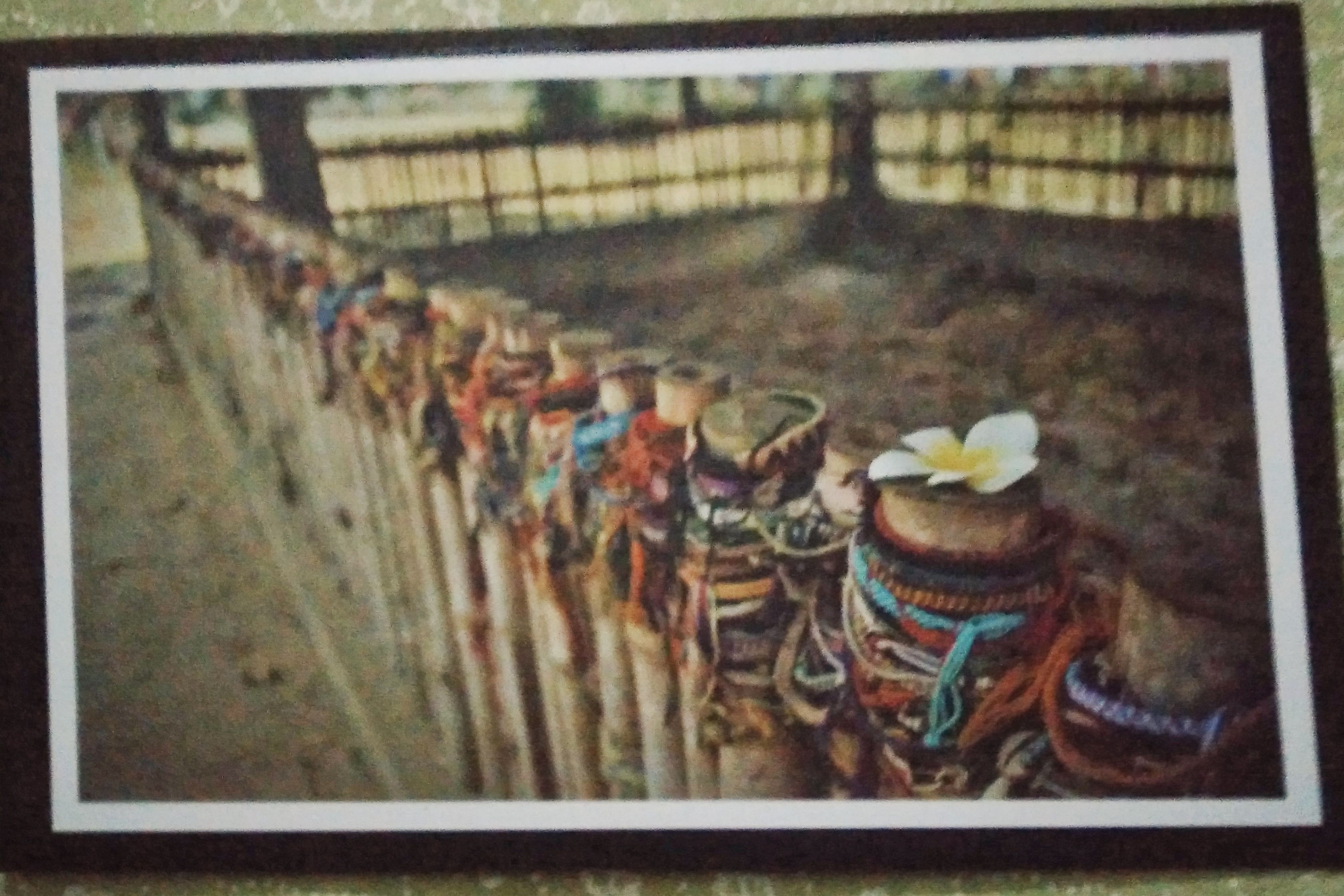

The other day I talked about my experience in Melacca's Jonker Street. and part of the experience was an
encounter with a sweet hitchhiker by the name of Miss Agustine Lovanne from Argentina.
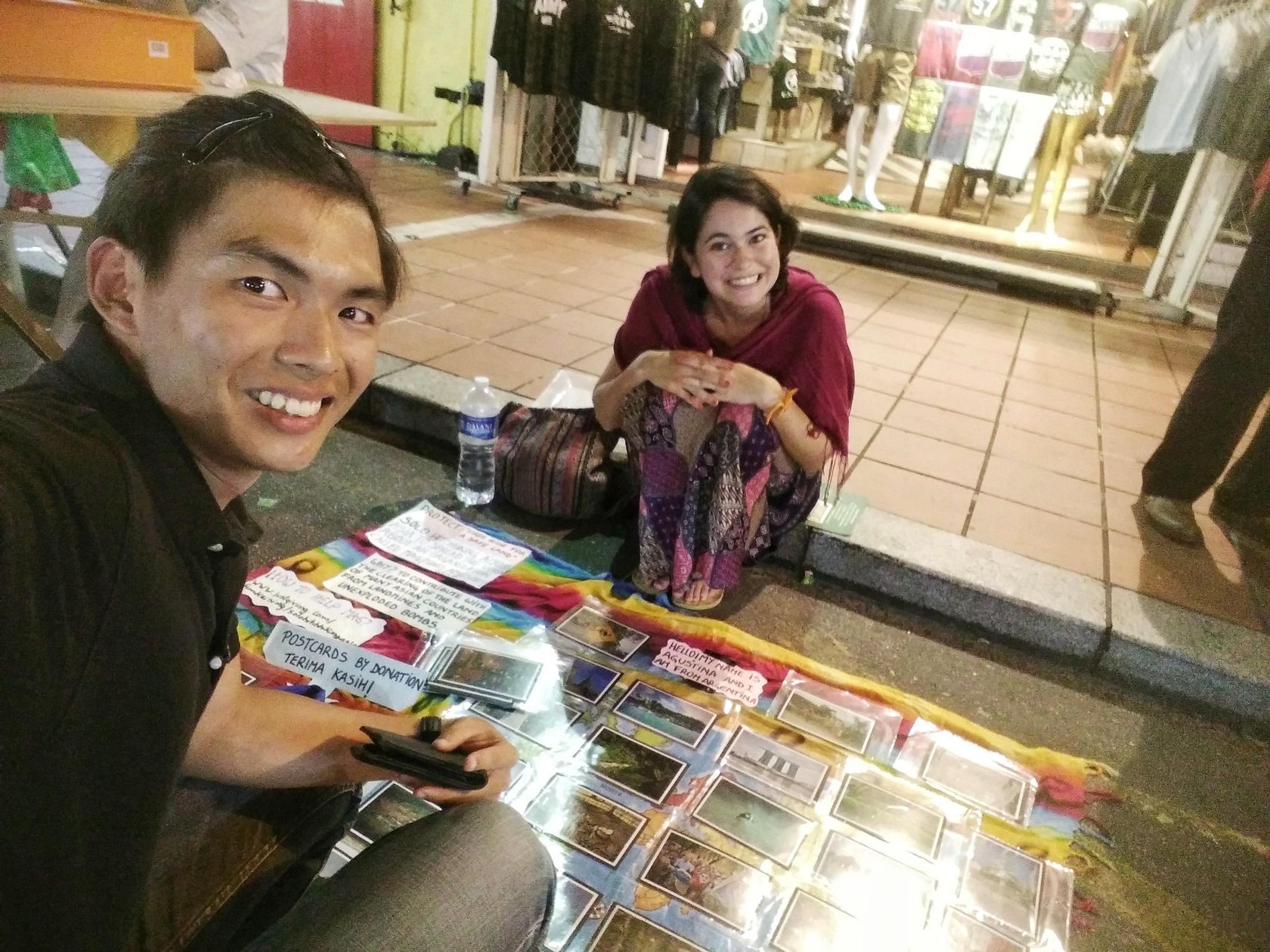
After a chat with her about daring to take a leap of faith (she has only one month's salary in her when she started her journey!) as well as the cause she is supporting (Mines Advisory Group). She asked me to take any photo she has taken and printed for free.
Naturally i got curious and would want to know more about the story behind the pictures she took. From her summer employment in Australia, to her travels during the Thai water festival, she imbued in me her fascinating stories of her solo hiking adventures. But one photo took my utmost attention. Incidently, it was one she feels most passionate with.
It was a picture of a caged lawn, with obvious history behind it. There are memorials all over the vicinity. Behind, she has written the place that picture was taken.
The Killing Fields -Choung Ek - Phnom Penh - Cambodia.
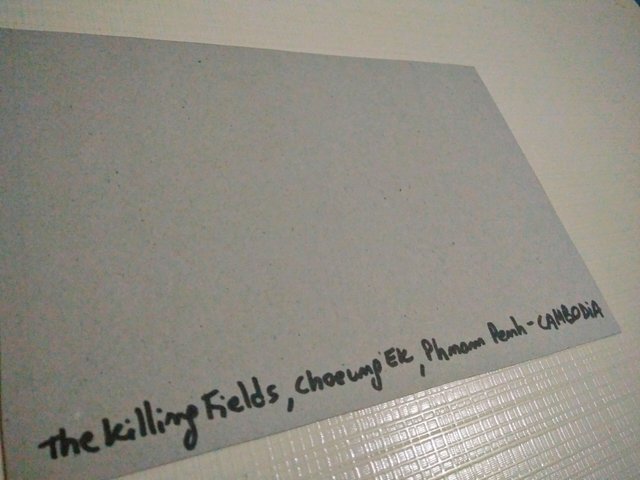
The Killing Fields
The Killing Field(s) are places where cumulatively, more than a million people were killed and buried by the the Khmer Rouge, A genocidal tyrant regime under Pol Pot.
During the early 70s, after the Cambodian Civil War, the Communist Party of Kampuchea was formed after a long history of uprising and Commuist nationalism among these Cambodians. Although formed many years before him, Pol Pot (original name Saloth Sar) changed the direction of the CPK, from another communist political party to the brutal regime is is known today.
After returning home from France where he and his dozen most trusted peers (and eventual highest rank officials) studied in university. Pol Pot gained an obsession towards Marxism and Communism, and dreamt his version of a Cambodia devoid of modern technology and knowledge, where everyone not among his military ranks are farming peasants.
Thus, after returning home to Cambodia, formed the Khmer Rouge from the existing CPK. "Rouge" as the French term for the colour Red and Khmer, the Cambodia word for the Cambodian People.
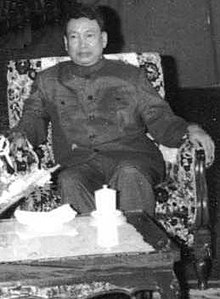
The Evacuation of Phnom Penh
For whatever his wicked reasons, the whole regime, led by the leader Pol Pot initiated a sort of radical agricultural reform by forcing every citizen to leave the city and labour in the countryside.
Though, after arresting and eventually executing almost everyone suspected of connections with the former government or with foreign governments, as well as professionals and intellectuals.
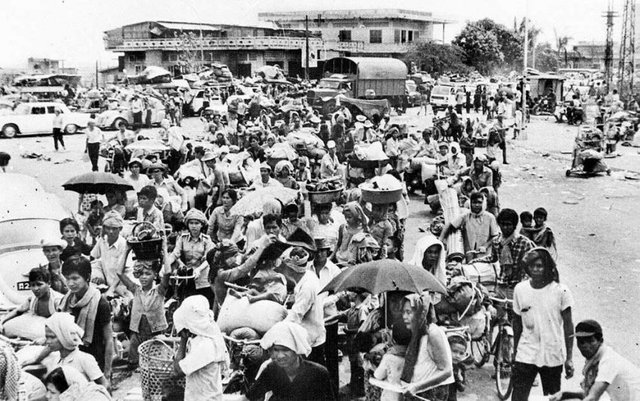
Regardless of age, health, social class, whether a person even knows how to grab a shovel. Everyone not arrested or dead by that point is forced to be farmers at gunpoint. Those in the city had it worse by
having to walk hundreds of miles away from their homes to the rural countryside. Many died just from the march alone, the old, the children, and the sick.
The Old People
It was just the beginning of the nightmarish years that follows though. In trying to achieve his dream of a cumminist agrarian nation, Pol Pot, through his military underlings ,forced millions of Cambodia people to work to their death in labor camps and farms, demanding a communist tax of 3 tons of grains per hectare farmed. It was simply undoable, Even rural Cambodians who had farmed the countryside for centuries if not millennias, only can produce an average 1 ton of grain per hectare at the time. Keep in mind these agricultural produce are all farmed by hands. No machines or any technologies to help them.
As the regime envisioned an agrarian "communist utopia" for Cambodia. Calling it's peasants to be the Old People like the villagers unlike the "burguioes" society of the city dwellers, dubbed the "New People" .
Intellect was a crime punishable by death. Pol Pot himself has said to the intellects and city people at the time that "To keep you is no benefit, To kill you is no loss". A mantra repeatedly spoken by the executioners of Khmer Rouge throughout the years. Ironically Pol Pot himself along with his trusted advisors were graduates of the esteemed École d'ingénieur généraliste en informatique et technologies du numérique (Engineering School of Information and Digital Technologies), a private university in southern Paris. With a penchant of French literature and high-society living.
Needless Deaths -- The Killing Tree
It was estimated anywhere from 600 thousand to 2.5 million deaths over the years of the Khmer Rouge's rule. The mass killings were done brutally. At first, people are executed with a bullet to the head, As time pass,
in a bid to save ammunition, the killings turned more "efficient", clubs, machetes, sharpened bamboo. There's a place in Cambodia you can even visit today called Site-21, or the Genocide Meseum, and near it is an execution site called
"The Killing Tree". Where it was told that the Khmer Rouge prison guards would smash the heads of babies and childrens or prisoners against the tree truck in order to kill them. This is done so that the children "would not grow up and take
revenge for the deaths or their parents". It was herrendous indeed. The more i read about it, the more saddened I am for the lives of these Cambodians. Even today, the effect of the Khmer Rouge is being felt by the people, 40 years later.
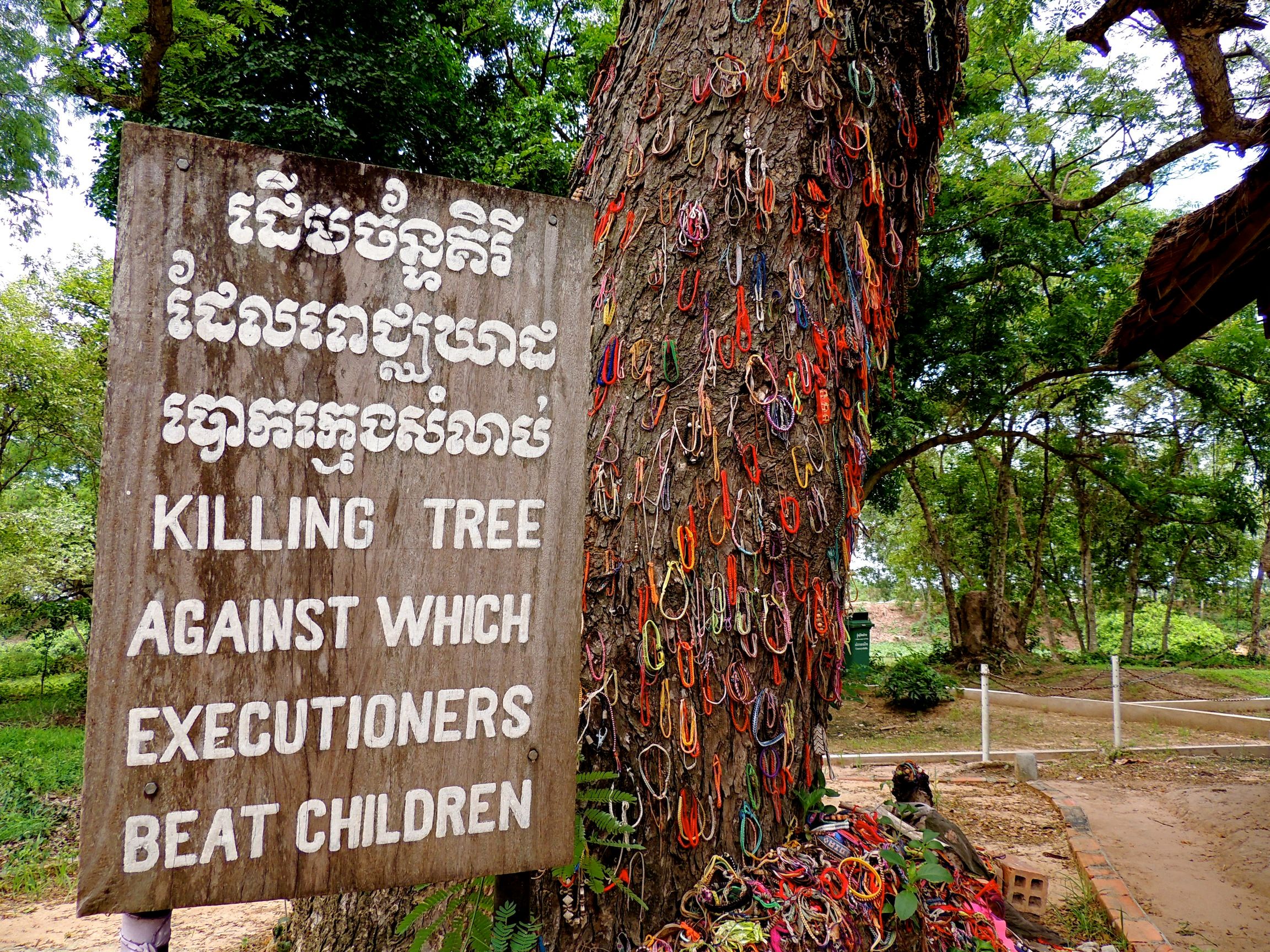
Remembering the horrors
Eventually after fall of the Khmer Rouge, the new Cambodian goverment, formed with the help of Vietnam, took the initiative to preserve the ruins of the Khmer Rouge prisons and uncover the mass graves of the people who died during the 4 years
of the Khmer Rouge's reign. To date, it was reported that at least 20,000 mass graves were discovered and uncovered all over Cambodia.
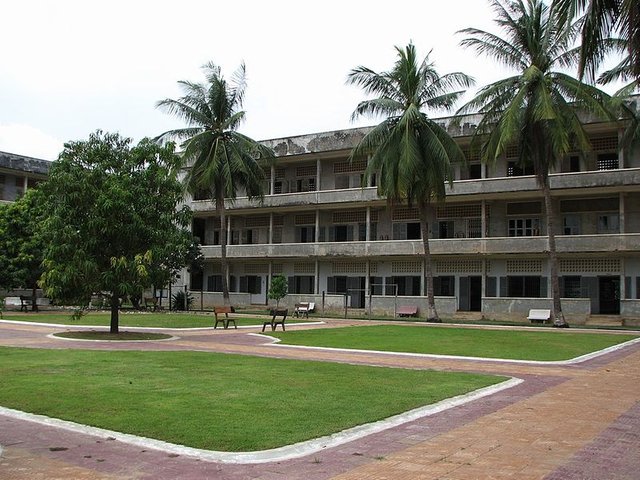
Yes, to date, because they are still discovering the mass graves and efforts are still ongoing.
There are also problems with explosive mines and unexploded bombs all over Cambodia. Affecting livelihood and killing Cambodians even today when someone steps on one.
This is a lesser told episode of the horrors humanity is capable of. There was no need for such massacres, no one alive can justify their deaths by the millions. No one, not even the elderly ex-Khmer Rouge's soldiers who are today still
under trials for war crimes and crimes against humanity. Yes, frail as they are, they are still being held in a trubinal called the Extraordinary Chambers in the Courts of Cambodia.
Cambodia is certainly a place i need to visit one day. Not only because despite the horror it experienced, it still offers beauty and nature it has been blessed with, but precisely to pay my respects and remember the deaths of countless innocent Cambodians.

Thank you for spending your time in reading this words of mine. After my encounter with the hitchhiker and my subsequent research on the horrors of the Khmer Rouge. I was astounded at the atrocities. People must know about this. And to never forget that humans are capable of great horrors for no justifiable reasons.
Until today, Do you know what the victims of Khmer Rouge demand? No, not revenge, they've seen enough violence to ask for more. Not justice, even if the perpetrator has to each die a million times can they pay back for what they did. All they wanted was to know "Why?" why the deaths, why the horrors.
And recently since 2009, the Cambodian government has reintroduced a formal history lesson to the younger generations to let them know of their history. Where before this, the horrors has only passed down through bedtime stories and ponderous retelling.
"Those who did not remember the past as bound to repeat it" - George Santayana
And so i feel this obligation to tell this story, the collection of stories and reports of something that certainly happened, to all. So that we remember it.
Thank you.
I'm @awesomianist
Stay Awesome
Thanks for this. Have you read or heard of this book, by chance? It's an excellent read (and a very sad, yet powerful one) on the topic. Reading it was my first history lesson on the Cambodian genocide, and one told from a firsthand, personal perspective. It has really impacted me deeply.
Cheers. Resteemed.
I have not come across this book. But I would love to read it. Maybe watch the movie version of it as well.
Sad as the topic is, I really stand firm that everyone has to know. Ignoring such atrocities exist will only lead to future atrocities. Thanks for recommending the book!
so much important history that we cannot forget ...
It's true. And it's especially these horrendous acts that we cannot forget. Because once we do there is the possibility of repeating it.
Cheung Ek and S21/Toul Sleng are woeth the visit - but have something happy planned afterwards.
Thanks for the advise. Luckily Cambodia is a beautiful country, it won't be difficult to find something nice to do or see.
Good post
#spamcard
#readit
Thanks for taking the time. I really hope you related to it.